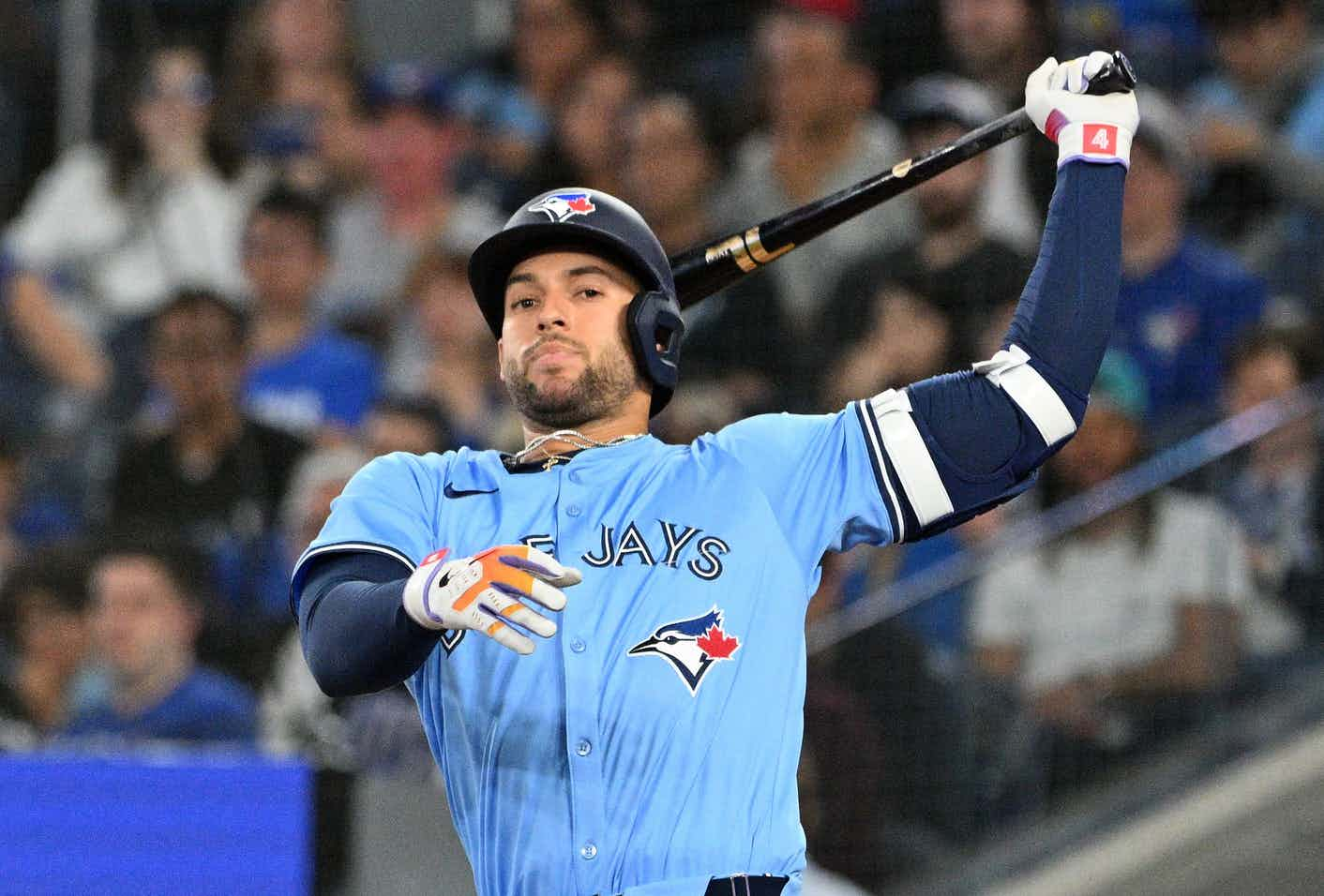Joe Carter wasn’t an analytics darling, and that’s okay

By Ian Hunter
5 years agoRarely are things ever as good as you remember them as a kid. Movies, candy, TV shows, amusement parks … for some, those fond memories carry over into beloved baseball players.
As a child, I always prided myself as a Joe Carter fan before he touched ’em all in 1993. The very first Blue Jays game I ever went to, the Jays clinched the 1992 American League pennant at Skydome. Carter went deep in that game and he instantly became my favourite Blue Jays player.
Ask any 30-something and they’ll elicit fond memories of Carter, too. Whether he was leaping like a maniac after catching the final out of the 1992 World Series or taking Mitch Williams deep in the 1993 World Series … you can’t help but not think of Carter when looking back at those World Series teams.
Carter built up so much goodwill with one swing of the bat that it didn’t really matter what he did the rest of his career. After the 1993 World Series, he had some okay years in a Blue Jays uniform, but nothing as good as his pre-1994 seasons.
Following the 1994 baseball strike, he came back for three more seasons in a Blue Jays uniform. For better or worse, Cito Gaston had Carter hitting third or cleanup for those final three seasons, despite a .683 OPS and 21 home runs during the 1997 campaign.
13-year old me has no recollection of the latter years of Carter’s career with the Blue Jays. The only space he occupied in my mind was from the 1992 and 1993 glory days. After writing about the Jays for a few years, curiosity got the best of me and I wanted to see if Carter was as good as I remembered.
Like any adult who wishes to crush their childhood dreams, I started perusing his Baseball Reference and FanGraphs page. It was a sobering experience, to say the least. It led me down this dark rabbit hole I never expected to dive into about my favourite player as a child.
Several years ago, it led me to write this article – “Is the legacy of Joe Carter overrated?” – in which, as it turns out, by Sabermetric standards, Carter wasn’t the Hall of Fame calibre player my eight-year-old self thought he was.
FanGraphs deemed he has three of the Top 10 worst seasons by WAR as a 100 RBI hitter. He also has the worst season OPS+ in a season ever by a 100 RBI hitter. To round out the trio, Carter’s 1990 season with the Padres was the second worst 20-20 season by a batter ever, measured by batting runs.
If you only look at the RBI and home run column on the back of his bubblegum card, he was one of the best hitters of the late 80’s and early 90’s. But if you dig deeper, you see the flaws in his game.
He hit over .300 only once in his career. Carter didn’t draw walks very often, as evidenced by his .306 career on-base percentage. He wasn’t a defensive wizard in the outfield either. But on that same token, Carter owns a career wRC+ of 102 and his 1991 and 1992 seasons with the Blue Jays were 120 and 123 wRC+ respectively.
In that exercise, I learned a few things. First: It’s no fun trying to discredit your childhood idols. The advent of analytics can often help one glean more appreciation for certain players. On the other hand, it often can blow up in your face and make you second guess life choices.
Secondly, I came to realize that Carter wasn’t an analytics darling … and that’s okay. In retrospect, he wasn’t someone Sabermetrics made look any better. But Carter did what he was paid to do – drive in runs and hit dingers.
***
For a sport that has reams of data available today, it’s easy to forget that in the early 90’s, a hitter’s worth was judged upon the triple crown statistics and little else. Aside from subjective opinions, reputations around the league and the team’s record, the MVP vote was driven by batting average, home runs and RBI’s.
Year-in and year-out, Carter checked two of the three of those boxes, which is why he had four Top 10 AL MVP finishes from 1986 to 1994. He even finished as high as third in AL MVP balloting in 1992. By WAR, Carter was 21st among the list of Top 25 AL MVP finishers, but he ultimately finished third behind Dennis Eckersley and Kirby Puckett.
Given the hindsight of advanced analytics, they don’t look back kindly on Carter’s career. But the game was much different in 1992 and 1993. Again, he checked two of the three boxes every year; home runs and RBI’s.
Carter posted 10 seasons of 100-plus RBI’s over his 16-year career. He hit 25 or more home runs in 10 of those 16 seasons. Even though the RBI statistic doesn’t carry much weight in today’s game, it carried a lot of weight back then, which is why Carter made good money over the years.
He was the quintessential run producer. By good virtue, Carter was always surrounded by great players and hit behind some phenomenal players. He was afforded a tremendous amount of RBI opportunities and Carter often delivered with men on base.
In that sense, it’s really hard to look back and fault a player for doing exactly what they should have. Carter’s skill set played as a cleanup hitter; a guy who could hit for power, not get on base very often, but who was better served to drive in runs.
That’s precisely what happened in Game 6 of the 1993 World Series. Rickey Henderson and Paul Molitor did what they did best; get on base. Then Carter game to the plate and did what he did best; drive them in. Those three RBI’s were the most important of Carter’s career, although technically, he could’ve not touched every base and the Blue Jays still would’ve won the World Series.
In my experience, players’ numbers rarely look better after the dust has settled on their career. There are exceptions, of course: Roy Halladay, Dave Stieb, Tony Fernandez, Carlos Delgado and Jimmy Key immediately come to mind. But for the most part, digging into the numbers often uncovers less-than-stellar statistics.
As the Blue Jays prepare to honour the 25th anniversary of the back-to-back World Series Championships in 1992 and 1993, just a reminder that it could be detrimental to visit the Baseball Reference and FanGraphs pages of your favourite Blue Jays player as a kid.
Don’t mess with the memory. Keep players like Carter up on a pedestal, because that’s what there they deserve to be.
Recent articles from Ian Hunter





